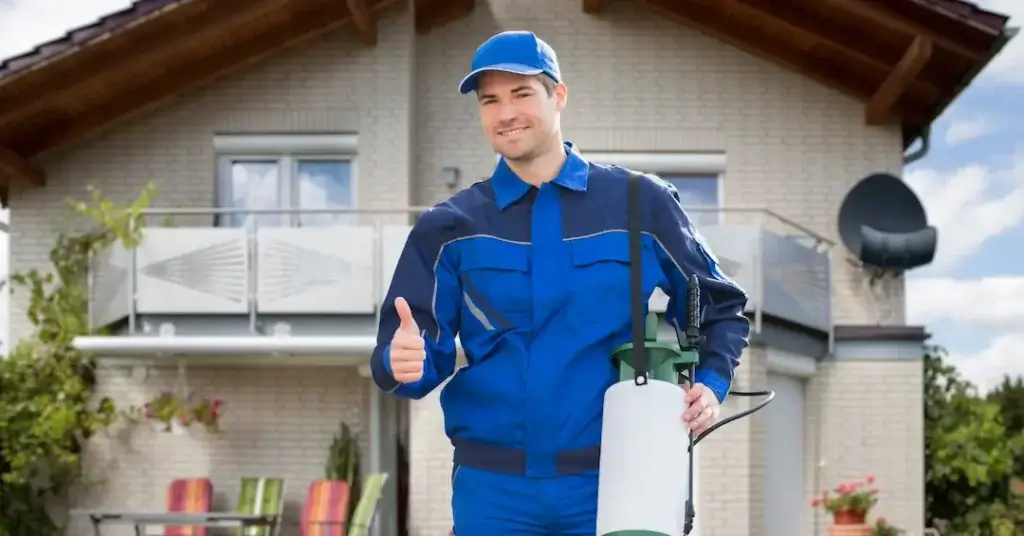Chicago Crawler Extermination Services: Safe and Reliable Removal
Chicago Crawler Extermination Services: Safe and Reliable Removal
Blog Article
A Comprehensive Guide to the Different Types of Bug Control Techniques
Bug control is an essential element of preserving a healthy and habitable setting, whether it's in our homes, gardens, or work environments. With the myriad of parasite control techniques offered, it can be overwhelming to find the most efficient remedy for a specific parasite issue. From chemical and organic methods to physical and all-natural alternatives, each method has its own unique toughness and constraints. In this extensive overview, we will certainly explore these various kinds of pest control techniques, offering insights right into their applications and advantages. By the end, you will certainly have a more clear understanding of which technique might be the most effective suitable for your insect control demands. Let's dive right into the fascinating world of pest control and uncover the secrets to a pest-free environment.
Chemical Pest Control Methods

One usual kind of chemical pest control is insecticides. Insecticides are chemical compounds that are especially developed to kill or drive away bugs. They can be applied in various types, such as sprays, baits, or cleans. Pesticides target specific parasites, such as insects, termites, or ants, and can be made use of both inside your home and outdoors.
Another kind of chemical parasite control is rodenticides. These are chemical substances made to control populaces of rodents, such as rats and computer mice.
Weed killers, also recognized as herbicides, are another sort of chemical parasite control technique. Herbicides are developed to selectively kill undesirable plants, understood as weeds, without causing injury to desirable plants. They are frequently utilized in farming, landscaping, and horticulture to control the growth of undesirable plant life.
While chemical insect control approaches can be very efficient in eliminating bugs, it is necessary to use them deliberately and comply with security guidelines. Overuse or abuse of chemical pesticides can have adverse influence on human wellness and the atmosphere. As a result, it is crucial to employ these techniques properly and think about alternative bug control strategies whenever feasible.
Organic Pest Control Approaches
Organic insect control methods entail the usage of living microorganisms or all-natural compounds to manage and control pest populaces. Unlike chemical methods, which typically rely upon artificial pesticides, organic control approaches make use of the natural opponents of bugs to regulate their populations. This strategy is thought about more eco-friendly and sustainable, as it lowers using damaging chemicals and minimizes the danger of chemical resistance.
One widely used organic parasite control technique is the intro of natural predators or parasites. Ladybugs are introduced to manage aphids, while certain wasp species are released to target caterpillars. These predators and parasites prey on pests, reducing their numbers and stopping problems.
Another biological control technique is making use of pathogens. Particular microorganisms, viruses, and fungi can be used to contaminate and kill certain insects. For example, the bacterium Bacillus thuringiensis is typically made use of to manage caterpillars, as it creates contaminants that are dangerous to these parasites.
Biological control methods can also entail the use of pheromones or natural substances that interrupt the breeding patterns of bugs. By disrupting their reproduction, these techniques aid to reduce pest populations over time.
While organic pest control approaches are usually efficient, they might call for longer durations to accomplish preferred results contrasted to chemical methods. Furthermore, cautious consideration must be provided to the selection and release of all-natural enemies to avoid unplanned injury to useful microorganisms or ecological communities.
Physical Parasite Control Approaches
To properly manage and control pest populaces, alternate insect control approaches understood as physical bug control methods are used. An additional physical bug control technique is the installation of fencings or walls to maintain larger pests, such as deer or bunnies, out of gardens or farming fields. Physical insect control approaches are an ecologically pleasant choice to chemical pesticides, as they do not rely on the usage of hazardous chemicals.
All-natural Bug Control Approaches
All-natural parasite control approaches provide a lasting and active termite control environmentally friendly technique to managing and removing parasites. These techniques prioritize the use of all-natural materials and biological representatives, reducing the need for chemical pesticides that can damage the atmosphere and human wellness. One of one of the most common natural parasite control techniques is organic control. This entails introducing all-natural killers or parasites to take advantage of or parasitize the insects. Ladybugs are often introduced to yards to manage aphid populations. One more natural method is using repellents stemmed from plants. Particular plants, such as marigolds, lavender, and pepper mint, discharge aromas that push back pests like insects, flies, and ants. Furthermore, cultural control methods can be used to stop and handle pest problems. This consists of correct cleanliness, normal upkeep, and advertising biodiversity in the garden. Rotating crops, eliminating yard particles, and motivating natural predators can assist protect against the build-up of parasites. By embracing these all-natural pest control approaches, individuals and areas can effectively take care of parasites while lessening the adverse effect on the setting and human health.
Integrated Insect Management (IPM)
Integrated Pest Management (IPM) is an extensive and systematic approach to pest control that integrates different approaches and strategies to efficiently take care of pests while minimizing the usage of chemical pesticides. IPM intends to maintain insect populaces listed below the economic injury degree by utilizing a combination of social, organic, and chemical control approaches.
Cultural control methods involve modifying the setting to make it less positive for insects. This can consist of methods such as plant turning, appropriate cleanliness, and using resistant plant varieties. By developing unfavorable problems for pests, social control methods can considerably minimize insect populations.

Chemical control approaches are utilized as a last resource in IPM. They entail the go to website targeted and judicious use of chemicals to handle insect populations. Unlike standard pest control approaches, IPM aims to lessen making use of chemical pesticides by utilizing alternative techniques.
Integrated Pest Management (IPM) is a positive technique that concentrates on long-term insect management as opposed to depending entirely on responsive steps. By combining several control methods, IPM provides a much more lasting and eco friendly approach to pest control.
Verdict
It went over chemical, site here biological, physical, and all-natural bug control methods, as well as the incorporated parasite management technique. By recognizing these different techniques, people can make enlightened decisions on which pest control approach is most appropriate for their particular demands and preferences.
Report this page